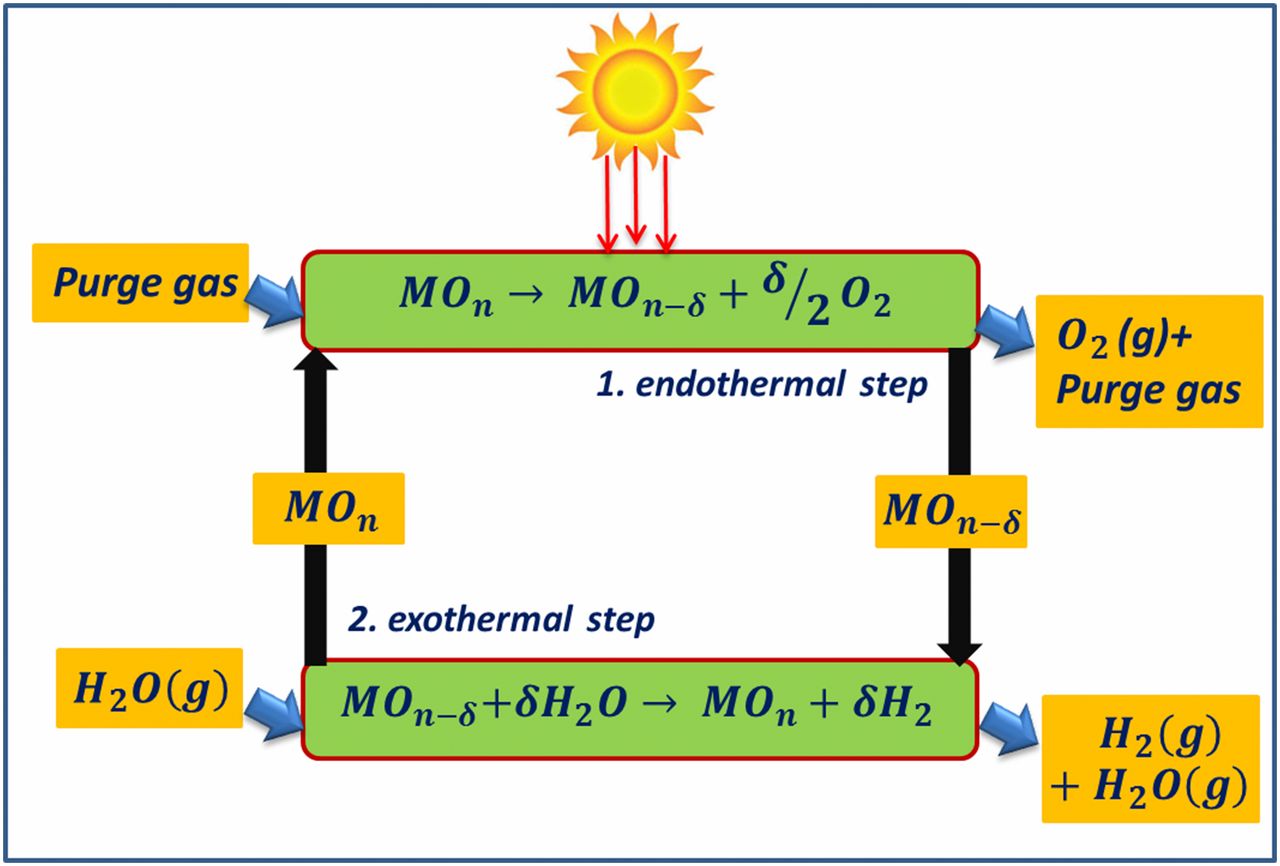
Abstract:
Hydrogen fuel is a valuable tool to achieve the energy transition process, and according to the 2050 net zero emissions scenario its demand is expected to increase by more than 530 Mt H2. This article discusses several routes available to produce hydrogen fuel, with a special focus on solar thermochemical cycles for Water Splitting (WS). Solar thermochemical WS cycles are a potential technology to produce green hydrogen and CO in the future due to their great potential to become a commercial scale process. This technology is still under development and some challenges related to components and sub-processes are being addressed by several research groups in order to make green hydrogen production by this route technically and economically feasible. Specific technological aspects such as particle heating methods, suitability and properties of redox materials for two-step cycles, methods to achieve low oxygen pressure in the reduction chamber, as well as the importance of implementing heat recovery are analysed in detail, as their performance have a significant effect on the overall efficiency and economic of the whole process. Current progress indicates that the realisation of a sufficiently efficient thermochemical cycle is possible within the few years, if the mentioned limitations are overcome.
Budama, V. K., Rincon Duarte, J. P., Roeb, M., & Sattler, C. (2023). Potential of solar thermochemical water-splitting cycles: A review. Solar Energy, 249, 353-366. https://doi.org/10.1016/j.solener.2022.11.001
Published in the January Issue of Solar Energy
























